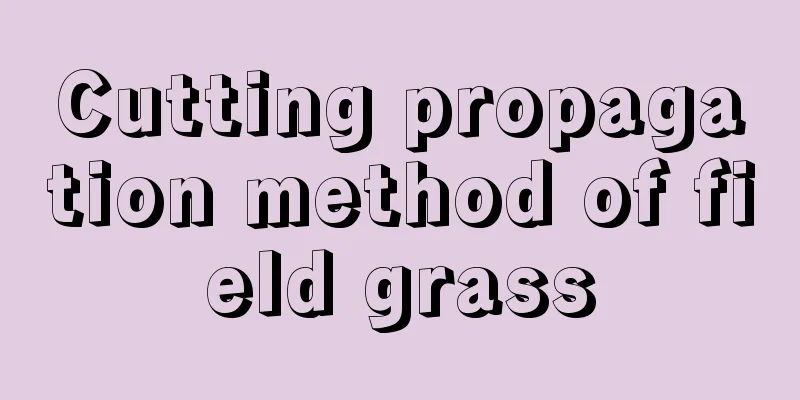Maintenance points for plants at different growth stages

Seedling stageThe seedling stage refers to the initial stage of growth, from breaking through the soil to the period before 3-4 true leaves appear. At this stage, the roots are shallow and the seedlings are small, so for those planted in garden soil, there is basically no need for top dressing. However, for those planted in a substrate with less fertilizer, top dressing can be applied as appropriate when the temperature is suitable. Note that the amount should be less than that during the peak growth period. In terms of watering, the soil should be kept moist before the cotyledons unfold; after the cotyledons unfold, you can switch to watering thoroughly when the topsoil is dry. For perennial plants, this maintenance method is suitable for the early germination period of bulbous plants and various woody plants (especially those with deciduous dormancy habits. When they start to sprout again, some species will appear at the same time as the bud stage, or just after flowering, and the duration is usually very short). Growth periodDuring this stage, plants grow rapidly and are one of the times that require water and fertilizer. When watering, water thoroughly when the topsoil is dry. Whether it is potted or planted in the ground, as long as the temperature is right, you can use fertilizer as appropriate. After all, there is an important principle in top dressing: do not use fertilizer if new leaves (buds) do not appear. For plants that are mainly for viewing leaves, it is appropriate to add more nitrogen in the fertilizer; for plants that are mainly for viewing flowers and fruits, you can add fertilizers rich in phosphorus and potassium. Bud and fruiting periodThis period is also the time when plants need water and fertilizer the most. Unlike the simple growth of leaves, the growth of flower buds and fruits consumes nutrients, while the growth of leaves accumulates nutrients. The watering method is the same as during the active growth period, that is, water thoroughly when the topsoil is dry. The frequency can be adjusted appropriately according to the growth of the plant and temperature changes. As for fertilizer, fertilizers rich in phosphorus and potassium are usually used to promote the growth of flowers and fruits. Dormant periodThis stage is a period of rest and recuperation for plants. Growth almost completely stops (applicable to most plants, especially some evergreen plants) and even leaves fall off (some woody plants that have the habit of losing their leaves in winter). All above-ground plants wither, leaving only perennial roots or bulbs (some perennial herbs), and require very little water and fertilizer. The general maintenance point is to stop fertilizing but not to stop watering. Seedling stageThe maintenance method during this period can completely refer to that during the dormant period, that is, stop fertilizing but continue watering, and water thoroughly when the topsoil is dry. Because the root system has not yet grown well at this stage and is sensitive to fertilizer, there is no need to consider topdressing. During the seedling stage, no matter what habits the plants have, it is generally recommended to place them in a place with scattered light and ventilation, and temporarily postpone exposing them to the sun. When they resume growth in the future, they can be taken care of according to their own habits. For a few very hardy plants, such as sunflowers and hanging bamboo plums, which are easy to survive by cuttings, appropriate exposure to the sun during the seedling stage will not affect their survival, and the management of such plants will be easier. Flowering periodFor plants that bloom seasonally and have a very short total flowering period, such as apple, pear, apricot, etc., it is not recommended to fertilize them when they are blooming in large quantities, because the flowers are sensitive to fertilizer. There are also plants that bloom all year round and have a very long flowering period, such as dwarf cattleya, carnation, geranium, and sunflower. During the flowering period when the temperature is suitable, you can use fertilizer (fertilizer rich in phosphorus and potassium) as appropriate. As for the watering method, the same applies to watering thoroughly when the topsoil is dry. This method is basically universal and applicable to almost all plants. |
<<: Five common mistakes when raising Phalaenopsis orchids
>>: What are the tips for caring for white palm?
Recommend
How many kilograms can Scrophularia produce per mu?
Scrophularia is a common Chinese medicinal materi...
Tomato planting methods and management methods
Tomato, also known as tomato, is a common vegetab...
What are the cultivation methods and precautions of hibiscus flowers?
Hibiscus growth habits Hibiscus likes to grow in ...
When is the best time to prune the bonsai yellow horn tree?
The role of pruning bonsai yellow horn tree Pruni...
What kind of flowerpot is good for money tree
What kind of flowerpot is suitable for money tree...
Can coffee grounds be used to grow flowers?
1. Can I grow flowers? You can use coffee grounds...
Difference Between Jerusalem Artichoke and Chicory
1. Difference of blades Jerusalem artichoke leave...
What should I do if the mage has grown up?
What does a magician apprentice look like? The Ma...
Can honeysuckle be planted in the yard?
Can honeysuckle be planted in the yard? Honeysuck...
How to grow Desert Rose well?
Desert rose is a succulent shrub or small tree . ...
How to plant shallots? When and how to plant shallot seeds
The planting time of red onions is from July to S...
When is pumpkin harvested? Harvest time and season
Pumpkin Harvest Time Pumpkins generally mature in...
Why doesn't the Clivia bloom?
1. Soil compaction Clivia is suitable for growing...
What are the cultivation methods and precautions of Dragon Tree?
Introduction of Dragon Beard Tree The dragon'...
For succulent plant beginners, this is how you should take care of the succulents you just bought home!
examine 1. If you buy succulents online, be sure ...









